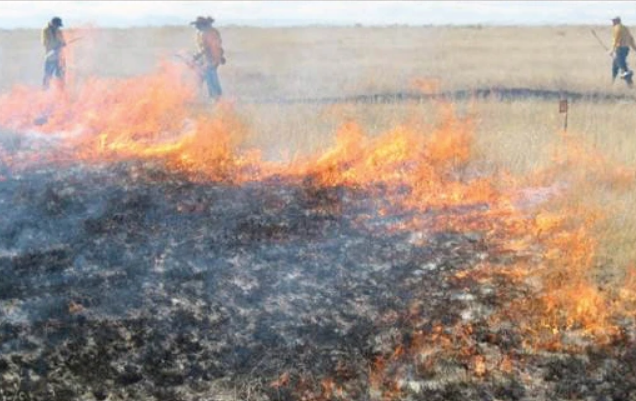In semi-arid grasslands of the North American Great Plains, fire has traditionally been viewed as having few management applications, and quantitative measurements of fire behavior in the low fuel loads characteristic of this region are lacking. More recently, land managers have recognized potential applications of prescribed fire to control undesirable plant species and to manage habitat for wildlife in this region. Working in the shortgrass steppe of northeastern Colorado over a 7-year period, we quantified peak temperatures, heating duration, and heat dosage produced near ground level during prescribed burns conducted under a wide range of fuel loads and weather conditions. We use an information theoretic approach to develop models that predict peak temperature and heat dosage as a function of weather parameters and fuel loads. Under the weather conditions that we examined, successful burns (>80 % of target area burnt) occurred with fuel loads varying from 350 kg ha−1 to 1175 kg ha−1, while burns with fuel loads <350 kg ha−1 generally failed to spread and burned less than 60 % of target areas. Peak temperatures, heat duration, and heat dosage during shortgrass burns: 1) were lower than reported for mixed grass prairies, 2) increased linearly with increasing fuel loads, and 3) were secondarily influenced by wind speed, ambient air temperature, and relative humidity. Compared to desert grassland, heat doses near the ground surface were similar, but peak temperatures were lower and heat duration longer in shortgrass steppe burns. Our findings provide quantitative predictions for heat production from fires in shortgrass steppe near the ground surface, where most plant meristems are located. Based on these relationships, we provide suggestions for burn prescriptions to achieve goals such as reducing abundance of undesirable plant species and providing habitat for native grassland birds.

